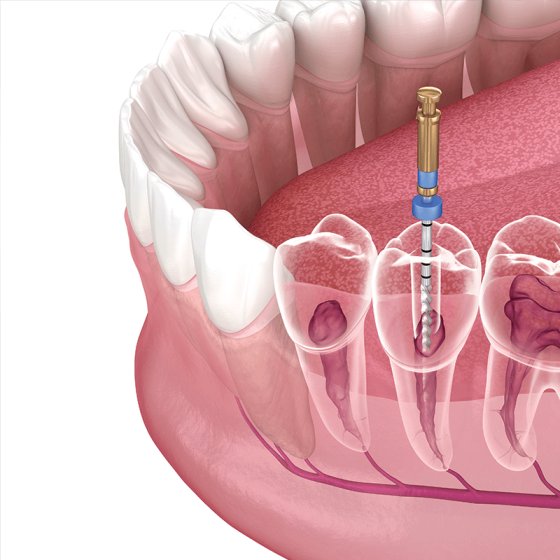- CALL US TODAY 0-1332-275007
- TUESDAY CLOSED !10AM to 1PM & 6:30PM to 9PM
- Book Appointment

Root canal is a treatment to repair and save a badly damaged or infected tooth instead of removing it. A root canal is a dental procedure involving the removal of the soft center of the tooth, the pulp. The pulp is made up of nerves, connective tissue, and blood vessels that help the tooth grow.
When is a root canal needed?
A root canal is performed when the soft inner part of a tooth, known as the pulp, is injured or becomes inflamed or infected.
The crown of the tooth — the part you can see above your gums — can remain intact even if the pulp is dead. Removing injured or infected pulp is the best way to preserve the structure of the tooth.
Common causes of damage to the pulp include:
The most common symptoms of damaged pulp include pain in your tooth, and swelling and a sensation of heat in your gums. Your dentist will examine the painful tooth and take X-rays to confirm the diagnosis.
PROCEDURE
Root canal therapy is done in three steps, and it takes between one and three sessions to complete.
1. Cleaning the root canal
First, the doctor removes everything that is inside the root canal.
With the patient under local anesthesia, the doctor makes a small access hole on the surface of the tooth and removes the diseased and dead pulp tissue with very small files.
2. Filling the root canal
Next, the doctor cleans, shapes and decontaminates the hollow area, using tiny files and irrigation solutions. Then, the tooth is filled with a rubber-like material, using an adhesive cement to seal the canals completely.
After root canal therapy, the tooth is dead. The patient will no longer feel any pain in that tooth because the nerve tissue has been removed, and the infection has been eliminated.
3. Adding a crown or filling
However, the tooth will be now more fragile than it was before. A tooth with no pulp must receive its nourishment from the ligament that attaches the tooth to the bone. This supply is adequate, but in time, the tooth will become more brittle, so a crown or filling offers protection.
Until the crown or filling is complete, the patient should not chew or bite on the tooth. Once there is a crown or filling is done, the person can use the tooth as before.
Treatment often takes only one appointment, but if there are curved canals, multi-canals, or large infections, this could take one or two additional appointments.
How painful is it?
One of the great fears about this kind of treatment is that it will be painful, but the treatment that is carried out by a trained dental surgeon should be relatively painless.
The pain that is felt comes from the infection and not from the treatment. The treatment does not cause pain; it helps to alleviate it.
The dental surgeon will relieve the pain of the procedure by numbing the tooth and surrounding area with local anesthesia.
